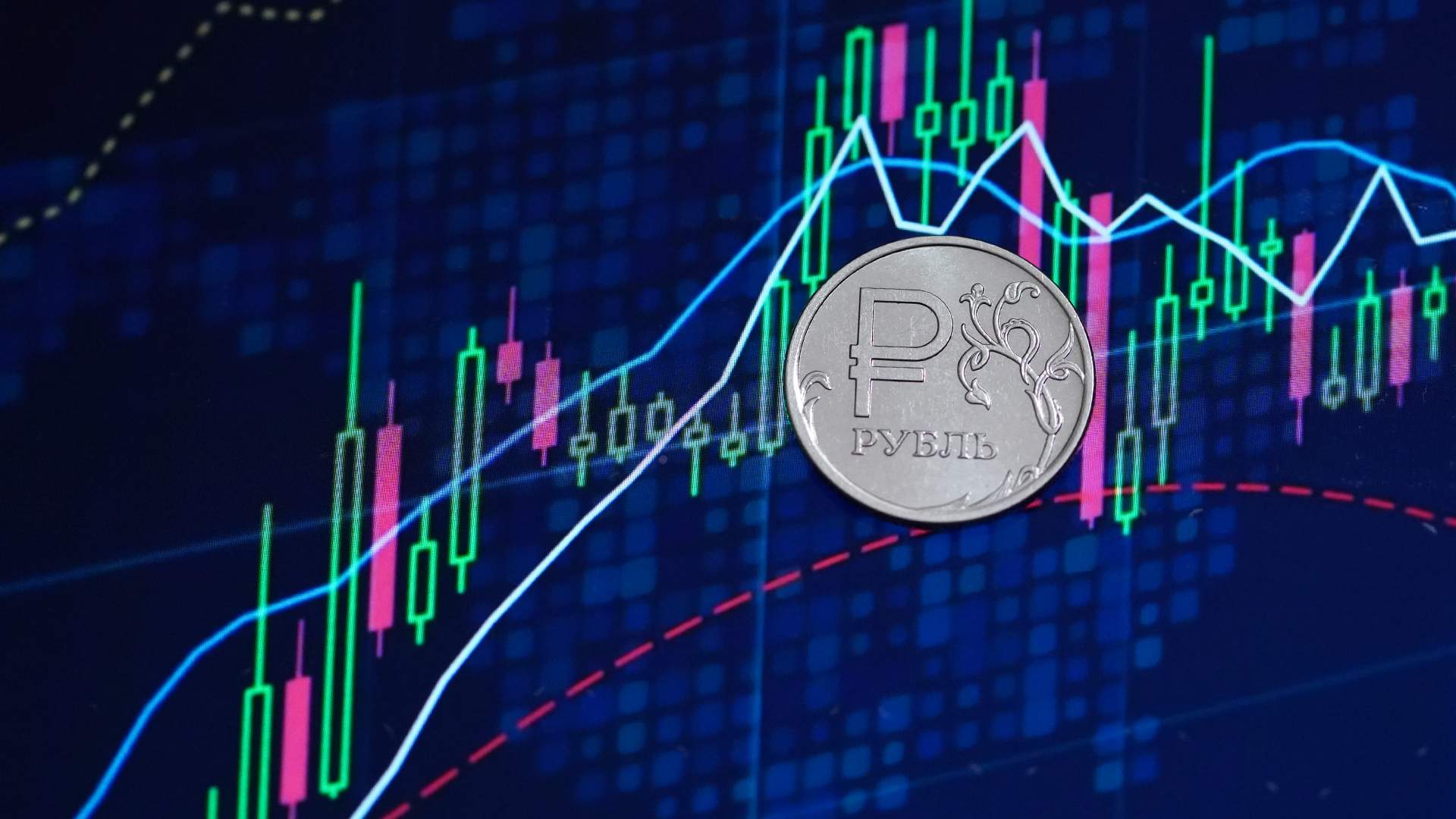
Ruble Not Rubble Joe
By Rhod Mackenzie
Back in 2022 the decrepit and senile old fossil that was the President of the United States in his announcement of shock and awe sanctions on Russia sais that the he would destroy the Russian economy and turn the Russia currency the Ruble in to Rubble. We that did not work out although the ruble did weaken a little at the time. Now 3 years on the Russian ruble has strengthened for the sixth consecutive month. It has value has gone from 102 rubles to 79 rubles per dollar. So what are factors that could cause the ruble to strengthen further. If so what are these factors, and will they be effective?
Since the beginning of 2025, the ruble exchange rate has strengthened by 25%. On 10 January, the dollar cost more than 102 rubles; on 20 February, it cost 90 rubles; on 22 April, it cost 80 rubles; and for nine days now, the dollar exchange rate has been around 78–79 rubles. This strengthening trend has been ongoing for six months.
However, the rouble is at a crossroads. Will it strengthen further to reach 75–76 rubles per dollar, or is 79 the maximum it can reach before weakening again to 80, then 90 and finally 100? Experts do not rule out a change in the five-month trend occurring this week.
What could help the rouble strengthen to 75–76 per dollar and beyond? Of course, significant progress on Ukraine would help. 'A reduction in the geopolitical risk premium could allow the rouble to strengthen slightly more.' Real progress in negotiations with Ukraine, leading to at least preliminary peaceful solutions, would boost demand for OFZs and domestic shares, thus activating demand for the national currency. However, it is difficult to expect quick progress — the negotiating process has only just begun, and there are many fundamental differences in the parties' positions," says Alexander Bakhtin, investment strategist at Garda Capital.
The ruble is usually supported by oil prices. But not now. 'World oil prices have stabilised after falling in April and have not had a significant impact on the ruble exchange rate for some time. However, the decline in the value of the dollar itself by about 9% since the beginning of the year (dollar index DXY) against most world currencies, coupled with the expectation of the Central Bank of Russia starting to ease monetary policy, are currently favouring the strengthening of the ruble," says Vladimir Chernov, an analyst at Freedom Finance Global.
He believes that the ruble could strengthen this summer due to the falling dollar exchange rate, primarily as a result of Donald Trump's tariff policy. Therefore, he thinks that the dollar exchange rate could reach 76–77 rubles.
However, as soon as the Russian Central Bank starts to lower the rate, the rouble will begin to weaken.
'Against the ruble, the Central Bank is expected to transition to lowering the key rate, and the first step may be taken this Friday. In our opinion, the rate may be lowered from 21% to 20%,"Bakhtin believes.
However, it is not yet clear what decision the regulator will make. Some in the market expect the rate to remain at 21% in June (the Central Bank meeting is taking place this Friday). Nevertheless, Bakhtin believes that the rouble will still lose ground in the summer due to traditional changes in the trade balance in the second and third quarters, when imports to the country increase after a seasonal decline. This is in addition to increased demand for currency from tourists travelling abroad.
Dmitry Babin, an expert on the stock market at BCS World of Investments, explains that the strengthening of the ruble in recent months was caused by exporters selling much more currency than the authorities require. 'Some companies find it profitable to keep the rubles earned from exports in debt instruments and deposits at high interest rates, while others find it problematic to borrow at the same high rates. In addition, exporters' costs in rubles have increased significantly over the past few years due to sanctions and high inflation,' says Babin. A decrease in the rate will gradually reduce demand for the rouble and weaken its exchange rate.
Natalia Pyryeva, a leading analyst at Tsifra Broker, does not rule out further strengthening in June to 75 rubles per dollar, 85 rubles per euro, and 10.5 rubles per yuan. However, she doubts that the national currency will be able to consolidate at these levels long term.
'All the conditions have come together for the gradual return of the ruble exchange rate to lower, economically justified levels. The official ruble exchange rate will most likely exceed 85 rubles in the summer, and could rise to around 90 rubles by the end of August," predicts Babin. Bakhtin from Garda Capital expects the dollar to rise to 82–85 rubles by the end of summer.
"We expect the ruble to resume its movement towards 90–95 rubles per US dollar, 100–107 per euro, and 12.4–13 per Chinese yuan by mid-summer to early autumn,"– says Pyryeva.
Bakhtin concludes that, for exporters and the budget, a ruble exchange rate of 90+ per dollar is more comfortable, and this will inevitably be affected by a reduction in the key rate and a seasonal deterioration in balance of payments parameters.
